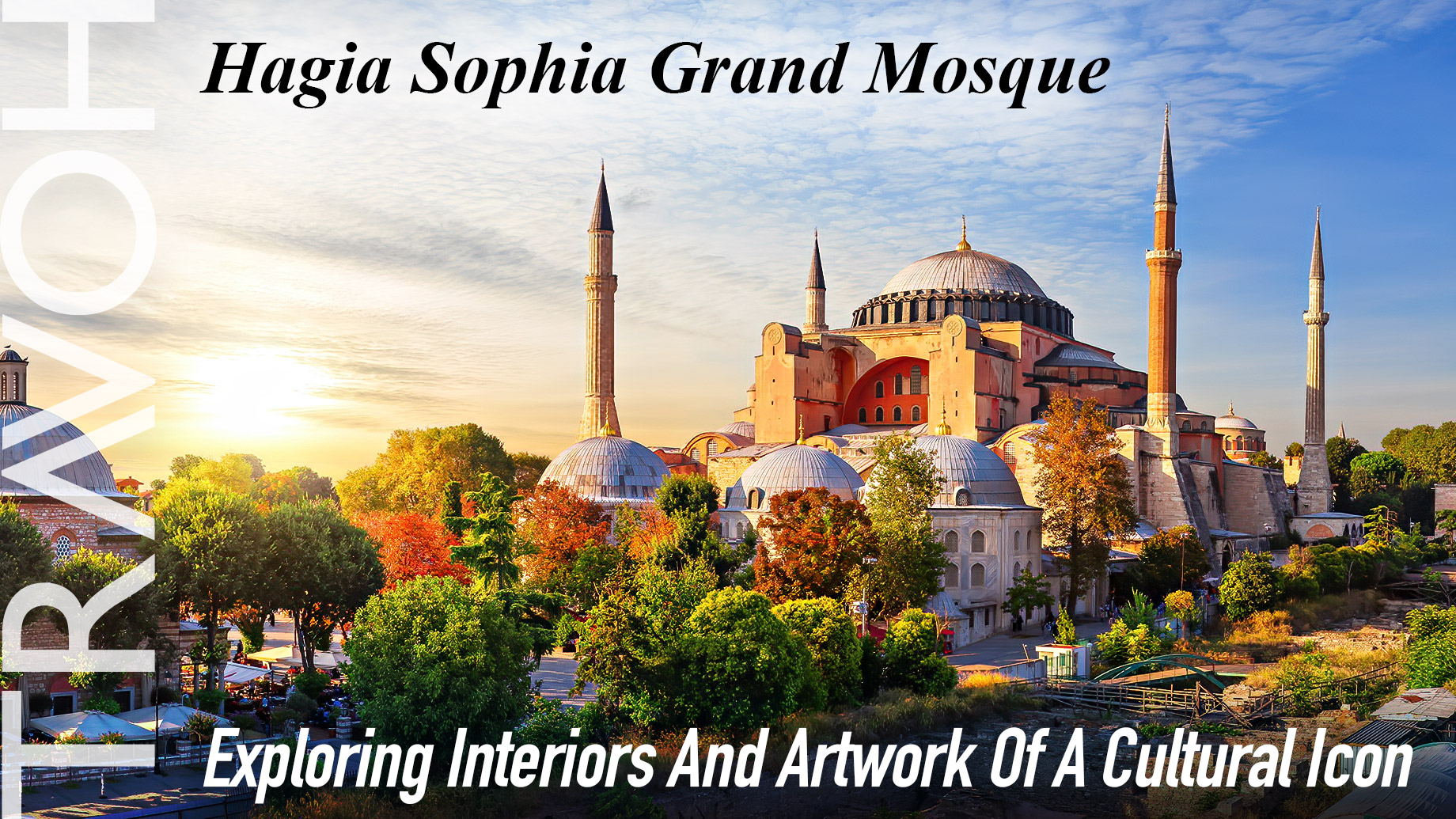
Hagia Sophia is a monument of unparalleled cultural and historical significance. Located in Istanbul, Türkiye, this architectural masterpiece has served as a church, a mosque, and now, a museum. It is a symbol of the diverse and complex cultural history of the region and has been a source of inspiration for artists and architects for centuries. In this article, we will explore the interiors and artwork of Hagia Sophia, delving into the details that make it such a unique and awe-inspiring structure.
Interiors of Hagia Sophia
Hagia Sophia interiors are an exquisite blend of Christian and Islamic elements, reflecting its varied history. The building was first constructed in the 6th century by the Byzantine Emperor Justinian I as a Christian church. The original structure was destroyed in a riot and was rebuilt by Justinian in just five years, reflecting his determination to create a grand structure that would rival the great buildings of Rome.
The most striking feature of the interiors of Hagia Sophia is its massive dome, which is over 55 meters high and has a diameter of over 31 meters. The dome rests on four massive piers, which are connected by arches, creating a vast open space in the interior. The walls and ceilings are decorated with intricate mosaics, which were added over time and reflect the changing religious and cultural influences on the structure.
One of the most impressive aspects of the interiors of Hagia Sophia is the use of light. The dome is pierced by a series of windows, which allow light to flood into the interior, creating a luminous and serene atmosphere. The light changes throughout the day, creating a dynamic and ever-changing environment that is awe-inspiring.
Artwork of Hagia Sophia
The artwork of Hagia Sophia is equally impressive, reflecting the skill and craftsmanship of the artists who worked on the structure over the centuries. The mosaics and frescoes that adorn the walls and ceilings of the building are a testament to the creativity and artistic vision of the Byzantine and Ottoman empires.
The mosaics in Hagia Sophia are some of the finest examples of Byzantine art, and they depict scenes from the life of Christ, the Virgin Mary, and other religious figures. The mosaics were created using tiny pieces of coloured glass and stone, and they are arranged in intricate patterns that create a sense of movement and depth.
The frescoes in Hagia Sophia are equally impressive, and they reflect the influence of the Ottoman Empire on the building. The frescoes depict Islamic motifs, such as the calligraphy of Arabic script, and they are a testament to the cultural and artistic fusion that occurred in the building over the centuries.
Conclusion
Hagia Sophia is a true cultural icon, reflecting the complex and diverse history of the region. The interiors and artwork of the building are a testament to the skill and creativity of the artists and architects who worked on the structure over the centuries. The massive dome, intricate mosaics, and stunning frescoes all combine to create a building that is both awe-inspiring and spiritually uplifting.
Hagia Sophia is a must-visit destination for anyone interested in history, art, and architecture. The interiors and artwork of the building are a testament to the rich cultural history of the region, and they offer a glimpse into the creative genius of the artists and architects who worked on the structure over the centuries. So, plan your visit to Hagia Sophia and experience the wonders of this magnificent building for yourself.
